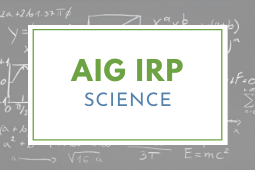Human Impact on Environment (AIG IRP)

Overview
This activity can be used as a way to introduce students to human impact or as a follow-up once essential standard 2.2 has been covered in class. This activity works best if done by groups of 2-3 students. People have many misconceptions about the Earth and things that affect the Earth. For this project, students will identify one misconception people have about the Earth or environment and work in a group to create a video/brochure/online media that can be published to address this misconception. A misconception isn’t a factual error or indication that a person is not educated; it is a misunderstanding about how something works. This lesson was developed by NCDPI as part of the Academically and/or Intellectually Gifted Instructional Resources Project. This lesson plan has been vetted at the state level for standards alignment, AIG focus, and content accuracy.
Lesson Overview
Brief Description of Lesson/Task/Activity: This activity can be used as a way to introduce students to human impact or as a follow-up once essential standard 2.2 has been covered in class. This activity works best if done by groups of 2-3 students.
People have many misconceptions about the Earth and things that affect the Earth. For this project, students will identify one misconception people have about the Earth or environment and work in a group to create a video/brochure/online media that can be published to address this misconception. A misconception isn’t a factual error or indication that a person is not educated; it is a misunderstanding about how something works.
Time Frame: 5-7 days
Type of Differentiation for AIGs:
- Enrichment
- Extension
Adaptations for AIGs:
- Content
- Product
Explanation of How Resource is Appropriate for AIGs: This activity requires students to move beyond the regular curriculum, highlights concepts of how misconceptions can cause problems instead of specifics of human impact on the environment, encourages focus on process, emphasizes use of knowledge, encourages active learning and metacognition, and encourages application of understanding to real-world situations.
Needed Resources/Materials: Computer with internet
Teacher Notes: If your school offers a statistics class, this task would provide a great opportunity to work collaboratively with a math class.
Stage 1: Engage
Ask students to think of science misconceptions/myths they have heard- blood is really blue until it hits the air, the world was once thought to be flat, humans came directly from apes and allow them to brainstorm some others. Lead students in a discussion of how such misconceptions can impact human thoughts and behaviors. The misconceptions surrounding evolution would be a great discussion considering evolution is part of the Biology Essential standards. Ask students how many think or have heard that they evolved from apes or that humans no longer need to evolve? Both topics are great for discussion- the PBS site- http://www.pbs.org/wgbh/evolution/library/faq/cat03.html has great info on these and other evolution misconceptions.
Some guiding questions for discussion are:
- How has the misconception affected you personally?
- If someone does not agree with your thought/ideas on evolution, does that make you mad- do you view them differently than someone who agrees with you?
- Has the misconception caused people to get angry and want to fight/sue other- (refer to the Scopes Trial)
- How can you present information to help others possibly change their minds about the misconception.
Students will brainstorm ways that humans impact the environment (burning of fossil fuels, release of CFC’s) and then brainstorm the effects of these impacts (ozone depletion, loss of biodiversity, sea level rise, climate change). Place students into groups of 3-4 depending on the size of the class and have each group decide on a specific human impact. Each group will develop a survey to determine the general school population’s view on whatever human impact their group has chosen. The survey can either ask about how humans impact the environment or the effects of humans on the environment (for example, Yes or No: The burning of gas does/does not affect sea level.) The survey can also address possible solutions to human impact. The goal of the survey is to determine the misconceptions other students have about the hows/whys/results of human impact. Once students administer the survey to their classmates (as many other students as possible), the results will be used for the next part of the activity.
Stage 2: Elaborate
Once each group has organized the data from the results of the survey, the groups should share/combine all their data to determine the misconceptions held by their fellow students and determine which one seems to be the biggest misconception (has the highest number of students with that misconception). Once they determine which misconception they need to address, they will clearly state what the misconception is and how it influences people/societies. The misconception must be relevant to Environmental Science. Students will continue working in their groups to complete the following task.
Students will create a video/commercial/news story/short story to address the misconception. Within their product, they should include:
- why the misconception is a problem,
- how the misconception could cause greater environmental impact,
- why the misconception exists, and
- how to correct the misconception.
Students should explain why correcting the misconception is important; this should be researched based. Students should research to see if the misconception has found its way into the general public through a form of media such as TV shows, a movie or a novel.
Stage 3: Evaluate
Develop a 3-4 point rubric that assesses the following criteria:
- Well developed survey
- Analysis of survey
- Misconception clearly stated
- Misconception impact
- Refutation of misconception
- Creativity of product